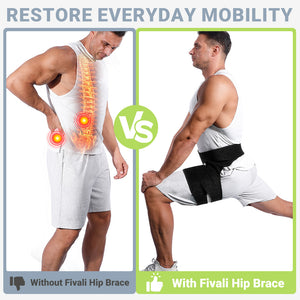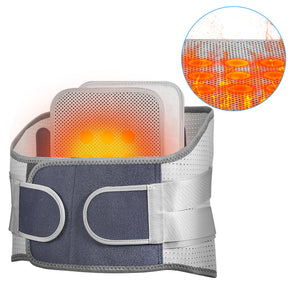How to Strengthen Your Weak Ankles for Better Mobility

Having strong and stable ankles is essential for maintaining mobility and preventing injuries. Weak ankles not only limit our movements but also increase the risk of sprains and strains. Fortunately, there are effective exercises and techniques that can help strengthen your ankles and improve your overall mobility. In this article, Fivali will explore some practical tips to strengthen weak ankles and regain confidence in your movements.
Understanding Weak Ankles
Common Symptoms
Weak ankles can manifest through various symptoms that affect mobility and stability. Recognizing these common symptoms is crucial in identifying and addressing weak ankles early on.
Frequent Ankle Sprains: Weakened ligaments and muscles around the ankle joint make it easier for the ankle to roll or twist, leading to sprains even during routine activities. If you find yourself spraining your ankle often, it may be a sign of underlying ankle weakness.
Ankle Instability: Individuals with weak ankles often experience a sense of instability or a feeling that the ankle joint is giving way. This instability can make it challenging to maintain balance while walking, running, or participating in physical activities, which also increases the risk of falls or accidents.
Generalized Ankle Pain: The muscles, tendons, and ligaments surrounding the ankle joint may become strained or overworked due to inadequate strength and stability. This can result in aching, soreness, or discomfort in and around the ankle area.
Limited Range of Motion: You may experience stiffness or tightness when attempting to move your ankle in specific directions. The ability to perform activities that require ankle flexibility, such as squatting, lunging, or climbing stairs, may be affected.
Causes of Weak Ankles
Weak ankles can be attributed to various factors that contribute to instability and reduced strength in the ankle joint. Some common causes include ankle sprains and ligament injuries, which can weaken the supporting structures of the ankle. Muscular imbalances in the lower leg, such as weak calf muscles or tight Achilles tendons, can also lead to instability in the ankle joint. Additionally, poor flexibility and limited range of motion in the ankle can increase its vulnerability to injury and instability. Genetic predisposition to ankle instability, as well as a history of previous ankle fractures or trauma, can further increase the likelihood of developing weak ankles.
Additionally, poor flexibility and limited range of motion in the ankle can increase its vulnerability to injury and instability.
The Harm of Neglecting Weak Ankles
Neglecting to seek timely treatment for weak ankles can have significant consequences on overall health and well-being. Weak ankles require attention and appropriate interventions to prevent further complications and reduce the risk of long-term issues.

Increased Risk of Repeated Injuries
Weak ankles are prone to repeated injuries, particularly sprains of the ankle. Without proper treatment and rehabilitation, the weakened ligaments and muscles surrounding the ankle joint remain susceptible to further damage. Each subsequent injury not only causes pain and discomfort but also further compromises ankle stability, increasing the likelihood of future injuries.
Reduced Physical Fitness and Performance
The compromised stability and limited range of motion make it challenging to engage in exercise and sports activities effectively. Reduced participation in physical activities can lead to deconditioning, decreased cardiovascular fitness, and muscle weakness, further exacerbating the overall impact on physical health.
Decreased Quality of Life
Chronic pain, limitations in mobility, and the inability to fully participate in activities and hobbies can lead to frustration, reduced self-confidence, and diminished enjoyment of daily life. The physical and emotional toll can affect mental well-being, social interactions, and overall happiness.
Ways to Strengthen Weak Ankles
Strengthening weak ankles is crucial for enhancing stability, preventing injuries, and improving overall mobility. Let's explore these strategies in detail:

Exercise for Strengthening Ankles
Engaging in targeted exercises is crucial for building strength and stability in weak ankles. Here are a few exercises that can be beneficial:
- Calf Raises: Stand with feet hip-width apart and slowly rise onto your toes, lifting your heels as high as possible. Lower back down and repeat for several repetitions. This exercise targets the calf muscles, which play a vital role in ankle strength.
- Ankle Circles: Sit on a chair or mat with one leg extended. Rotate your ankle in a circular motion, both clockwise and counterclockwise. Perform this exercise for several repetitions on each ankle to improve range of motion and strengthen the ankle joint.
- Resistance Band Exercises: Attach a resistance band to a sturdy object and loop it around the top of your foot. Sit on the floor with your leg extended and gently flex your foot against the resistance of the band. This exercise targets the muscles responsible for ankle dorsiflexion and strengthening.
Balanced Diet
Maintaining a balanced diet plays a significant role in overall health, including the strength of your ankles. Ensure that your diet includes essential nutrients like calcium, magnesium, vitamin D, and protein. These nutrients contribute to bone health and muscle strength, which are crucial for supporting strong ankles. Incorporate foods such as dairy products, leafy greens, nuts, lean meats, and fish into your diet to promote optimal bone and muscle health.
Medical Evaluation and Diagnosis
If you experience persistent ankle weakness or recurrent injuries, it is crucial to seek a medical evaluation and diagnosis. A healthcare professional, such as an orthopedic specialist or a physical therapist, can assess your condition, identify any underlying issues, and provide appropriate treatment recommendations. They may recommend imaging tests, such as X-rays or MRI scans, to assess the ankle's structure and identify any potential abnormalities or injuries.
Additionally, they can design a personalized rehabilitation program that includes targeted exercises, stretching routines, and other interventions to strengthen weak ankles. Following their guidance and regularly attending physical therapy sessions can significantly improve ankle strength and overall mobility.
Strengthening weak ankles requires a comprehensive approach that includes specific exercises, a balanced diet, and medical evaluation. Remember to consult with a healthcare professional before starting any new exercise program to ensure it is suitable for your specific needs and capabilities.
How to Prevent Weak Ankles in Daily Life
Preventing weak ankles in daily life is crucial for maintaining optimal ankle health, reducing the risk of injuries, and promoting overall mobility. By implementing regular monitoring and self-care practices, paying attention to proper technique and form during activities, selecting appropriate footwear, and utilizing ankle brace support when necessary, individuals can effectively prevent weak ankles.

Regular Monitoring and Self-Care
Taking an active role in monitoring the health of your ankles is essential for prevention. Regularly assess your ankles for any signs of weakness, discomfort, or instability. If you notice any issues, take proactive measures, such as rest, ice, compression, and elevation (RICE), to alleviate symptoms and promote healing. Additionally, perform gentle ankle stretches and range-of-motion exercises regularly to maintain flexibility and strengthen the surrounding muscles.
Proper Technique and Form
Paying attention to proper alignment and mechanics during activities can significantly reduce the risk of developing weak ankles. Whether you're walking, running, or participating in sports, ensure that you maintain good posture and engage in activities with proper technique. Avoid excessive twisting or rolling of the ankles, and focus on maintaining stability and control throughout movements. If you're unsure about the correct form, consider consulting a coach, trainer, or physical therapist for guidance.
Proper Footwear Selection
Select shoes that offer sufficient support, cushioning, and stability. Look for shoes with a firm heel counter and good arch support to help maintain proper ankle joint alignment. If you have specific foot or ankle conditions, consider consulting with a podiatrist to obtain custom orthotics or specialized footwear that suits your individual needs.
Ankle Brace Support
In certain situations, using ankle brace support can be beneficial for preventing weak ankles, especially during high-impact activities or when recovering from an ankle injury. Ankle braces provide additional stability and limit excessive motion, reducing the risk of sprains and strains. Consult with a healthcare professional to determine if an ankle brace is appropriate for your specific circumstances and for guidance on selecting the right type of brace.
In anticipation of the highly anticipated NCAA games, Fivali is currently hosting a grand discount promotion. As part of this event, we have meticulously prepared various discounts, including special offers on ankle protection products. Now is the perfect time to purchase Compression Ankle Braces! There are recommendations for those seeking good quality ankle brace support for weak ankles:
Fivali Ankle Stabilizer Brace for Ankle Sprain Recovery - 1 Pack
- Provides stability to the ankle.
- Reduces the risk of sprains.
- Offers a comfortable fit.
- Allows natural movement.
Fivali Ankle Socks Anti-Sprain - 2 Pack
- Lightweight and comfortable.
- Suitable for various activities.
- Fit comfortably in most shoes.
- Aid in injury recovery and prevention.
FAQs of Ankles
What should I do if I sprain my ankle?
When you sprain your ankle, try resting, applying ice, compressing the area, and elevating it to reduce swelling and pain. Additionally, consult a healthcare professional for recovery and consider taking over-the-counter pain medication if necessary. Remember to avoid putting too much weight on the injured ankle to allow it to heal correctly.
When selecting ankle support, what factors should I consider?
If you are allergic to nylon, you should avoid ankle supports that contain nylon materials. If you prefer a breathable wearing experience, consider opting for lightweight designs or ankle supports made from breathable fabrics.
Can I wear an ankle support while sleeping?
It is generally safe to wear an ankle support while sleeping, provided it provides comfort and helps alleviate your specific condition. It's essential to ensure that the ankle support is neither too tight nor uncomfortable, as it may affect your circulation during sleep. If you have any concerns, consult with a healthcare professional before wearing an ankle support while sleeping.
Strengthening weak ankles in daily life requires proactive measures and mindful practices. By incorporating these strategies and cautions into your daily routine, you can promote ankle health, reduce the risk of injuries, and maintain optimal mobility. Remember to consult with healthcare professionals for personalized advice and guidance tailored to your specific needs.















